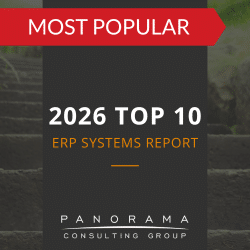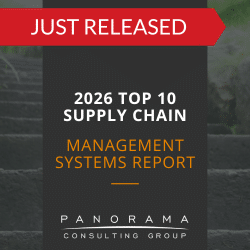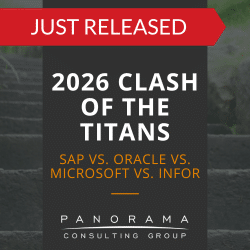Many organizations implement modern human capital management (HCM) software to reduce HR expenses, such as labor costs and outsourcing costs. However, HCM implementations often fall short of these goals and fail to achieve other HR-related benefits.
Why? One of the most common causes of failure is a lack of organizational change management. In their quest to choose the right vendor and implement the system as quickly as possible, executives lose sight of the people side of change.
Today, we’re sharing HCM implementation change management tips to help you navigate this overlooked aspect of business transformation.
The Difficulty of Implementing an HCM System
In the beginning, it’s easy to visualize how HCM tools can bolster performance, increase employee engagement and streamline core processes. From personnel management to time and attendance tracking, HCM systems are designed to reduce manual work and optimize workforce performance.
However, employees are usually resistant to new processes and technology – whether it’s HCM, CRM or ERP software. When it comes to HCM software, employees might be concerned about the implications of allowing automated machines to make decisions about employees without human involvement.
Ultimately, the main concern employees have is the prospect of learning something new without enough guidance.
Many employee concerns can be abated by minimizing business process reengineering where possible. Even process standardization may frustrate some employees.
Realistically, though, you will need some amount of process improvement. Thus, the importance of change management remains.
Business Resilience Survey
Take our quick survey to share your organization’s pandemic rebound experience, and receive a Starbucks gift card.
Why a Change Management Plan is Important
Any time an organization prepares to implement an enterprise-wide change, it’s critical to develop an organizational change management plan that helps leaders manage the entire change process. The project team can use this plan to assess the organizational culture, identify barriers to change and design a communication strategy.
Think your organization is too pressed for time to develop a change management plan, even with the help of an ERP consulting firm? You’ll actually find that it’s more expensive, time-consuming and precarious to not develop one.
For example, this could mean that employees are not sufficiently trained to properly input and manage data in the new HCM system – or they simply are not instilled with the desire to follow these processes. Either way, this could result in inaccurate data for decision making.
6 HCM Implementation Change Management Tips
1. Build a Change Management Team
Your change management team should be comprised of people who understand the need for the change and have the capacity to support this effort.
In addition to executives and managers, you can also employ change agents. These are employees tasked specifically with promoting and supporting the change within your company.
Along the way, this team will communicate key messages regarding the change to your workforce. They’ll also help you keep the change management process on track.
2. Ensure Executive Alignment
It’s critical to achieve top-level support for your project. In fact, when executives are engaged and help lead the change, employees are often more willing to follow suit.
However, don’t stop with your C-suite. You also should loop in mid-level managers as early as possible and seek support from leaders at every level. This way, they’ll have time to prepare for the inevitable questions that their teams are sure to have.
ERP implementation companies, like Panorama, can help you develop an HCM business case that ensures executive buy-in and alignment.

3. Facilitate Organizational Readiness and Organizational Impact Assessments
An organizational readiness assessment can help you discern if your company is truly ready to support the change at hand. A few areas to analyze include:
- Level of executive buy-in
- Organizational culture and other attributes
- Track record of change success vs. failure
In addition, we recommend conducting an organizational impact assessment. This analyzes the expected impact the change will have on your organization.
In other words, how will the new technology change roles and responsibilities? Will it affect your reporting structure or corporate culture? What new skills will be required?
4. Develop a Communication Plan
Often, resistance is rooted in a lack of understanding. This is why timely, clear communication is key.
We recommend taking a two-way approach. As you deliver important facts, remember to allow plenty of time to listen and respond to questions.
During these conversations, it helps to highlight the benefits that the new technology will bring to your organization. For instance, you might highlight the benefits of machine learning and AI for HR processes. These include:
- Predicting employee outcomes
- Personalizing the employee experience
- Removing bias in managerial decision making
In addition to benefits, you should also communicate upcoming milestones. This might involve developing a project portal website to keep employees up-to-date. Everyone can log in to learn more about the new HCM system, view the timeline and understand the role they play in the project.
5. Customize Training Materials
Effective end-user training is an essential part of any change project, so resist the urge to pass out manuals, pop in a training DVD and call it a day.
Instead, tailor these materials to fit your business processes, and help employees understand how the new system affects their unique role by customizing training based on the most relevant functionality to that role.
For some employees, this might mean simply making sure they’re well-versed on how to enter their hours. For others, this may involve showing them how to use the HCM software to conduct performance reviews and access important financial reports.
6. Identify Signs of Resistance and Determine Root Causes
A few key signs of change resistance include:
- Avoiding new assignments
- Productivity dips
- Absenteeism
- Poor morale
- Gossip and complaints
If you notice any of these signs, then it’s time to identify root causes. For example, employees might be resisting change out of fear, concern or a lack of knowledge.
Based on the causes you identify, you can expand your communication plan to target certain messages to certain workgroups.
Make the Most of Modern HCM Technology
Today’s HR professionals have access to some of the most innovative tools and technologies in the world. Today’s HCM solutions are no exception. With this software, you can quickly hire the best talent, facilitate employee self-service and make informed decisions – but only if you focus on organizational change management.
This list of HCM implementation change management tips is a good place to start. If you need professional guidance, our organizational change management consultants are here to help. Schedule a free consultation below.













